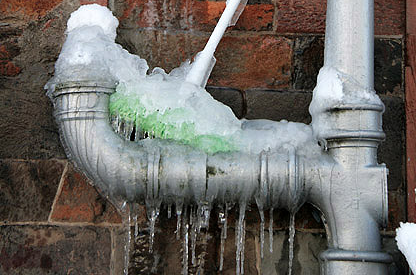Avoiding Frozen Plumbing in Cold Weather: Professional Strategies
Book MaintenanceThe article author is making a few good points on the subject of How to Prevent Your Pipes From Freezing overall in this post following next.

Winter can damage your plumbing, specifically by freezing pipes. Here's just how to avoid it from taking place and what to do if it does.
Intro
As temperature levels decrease, the risk of frozen pipes rises, potentially causing pricey repair services and water damages. Understanding how to stop frozen pipes is important for property owners in cold environments.
Avoidance Tips
Protecting at risk pipelines
Wrap pipelines in insulation sleeves or use warm tape to safeguard them from freezing temperatures. Concentrate on pipelines in unheated or external locations of the home.
Heating methods
Maintain indoor rooms appropriately heated, particularly areas with pipes. Open cabinet doors to allow cozy air to distribute around pipes under sinks.
Just how to determine icy pipelines
Search for lowered water flow from faucets, uncommon smells or noises from pipes, and visible frost on revealed pipelines.
Long-Term Solutions
Architectural changes
Take into consideration rerouting pipes far from exterior walls or unheated areas. Add additional insulation to attic rooms, basements, and crawl spaces.
Updating insulation
Buy top quality insulation for pipelines, attic rooms, and wall surfaces. Correct insulation assists keep regular temperatures and lowers the risk of icy pipes.
Shielding Exterior Pipes
Yard hose pipes and outside taps
Disconnect and drain pipes garden pipes prior to winter. Set up frost-proof spigots or cover exterior taps with shielded caps.
Comprehending Frozen Pipelines
What triggers pipes to ice up?
Pipelines ice up when subjected to temperature levels below 32 ° F (0 ° C) for extended periods. As water inside the pipelines freezes, it broadens, putting pressure on the pipe walls and possibly triggering them to rupture.
Threats and damages
Icy pipes can result in water disturbances, home damages, and expensive fixings. Burst pipes can flooding homes and create extensive structural damage.
Signs of Frozen Pipeline
Identifying icy pipelines early can avoid them from rupturing.
What to Do If Your Pipelines Freeze
Immediate actions to take
If you suspect frozen pipelines, keep faucets available to soothe pressure as the ice thaws. Use a hairdryer or towels taken in warm water to thaw pipelines slowly.
Verdict
Stopping frozen pipelines calls for proactive actions and fast feedbacks. By recognizing the reasons, indications, and safety nets, house owners can safeguard their plumbing throughout cold weather.
5 Ways to Prevent Frozen Pipes
Drain Outdoor Faucets and Disconnect Hoses
First, close the shut-off valve that controls the flow of water in the pipe to your outdoor faucet. Then, head outside to disconnect and drain your hose and open the outdoor faucet to allow the water to completely drain out of the line. Turn off the faucet when done. Finally, head back to the shut-off valve and drain the remaining water inside the pipe into a bucket or container. Additionally, if you have a home irrigation system, you should consider hiring an expert to clear the system of water each year.
Insulate Pipes
One of the best and most cost-effective methods for preventing frozen water pipes is to wrap your pipes with insulation. This is especially important for areas in your home that aren’t exposed to heat, such as an attic. We suggest using foam sleeves, which can typically be found at your local hardware store.
Keep Heat Running at 65
Your pipes are located inside your walls, and the temperature there is much colder than the rest of the house. To prevent your pipes from freezing, The Insurance Information Institute suggests that you keep your home heated to at least 65 degrees, even when traveling. You may want to invest in smart devices that can keep an eye on the temperature in your home while you’re away.
Leave Water Dripping
Moving water — even a small trickle — can prevent ice from forming inside your pipes. When freezing temps are imminent, start a drip of water from all faucets that serve exposed pipes. Leaving a few faucets running will also help relieve pressure inside the pipes and help prevent a rupture if the water inside freezes.
Open Cupboard Doors
Warm your kitchen and bathroom pipes by opening cupboards and vanities. You should also leave your interior doors ajar to help warm air circulate evenly throughout your home.

Hopefully you enjoyed our article about Winter Plumbing Precautions: Preventing Frozen Pipes. Thanks so much for spending some time to read our blog. Remember to take a moment to promote this post if you appreciated it. I enjoy your readership.
Book An Appointment